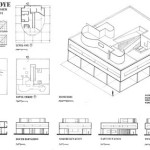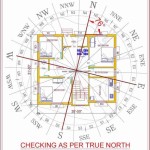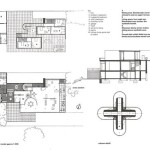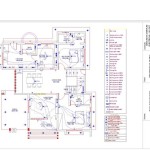Japanese Tea House Roof Plans: A Guide to Traditional Design Principles
Japanese tea houses, or chashitsu, are renowned for their serene beauty and integration with nature. The roof, a prominent architectural feature, plays a significant role in establishing this aesthetic. Understanding traditional Japanese tea house roof plans requires exploring their historical context, structural elements, and symbolic meanings.
Historically, tea house roof designs evolved alongside the development of the tea ceremony. Early tea houses in the 16th century, influenced by Zen Buddhist aesthetics, favored rustic simplicity. This translated into thatched roofs with steep slopes, reflective of humble mountain dwellings. As the tea ceremony gained prominence among the ruling class, more elaborate roof designs emerged, incorporating tiled roofs and ornate detailing.
Several key structural elements define traditional Japanese tea house roofs. The most common roof type is the yosemune, a hipped roof with slopes on all four sides, offering excellent drainage and wind resistance. Variations include the irimoya, which combines a hipped roof with a gable end, creating a more complex and visually striking structure. The kirizuma, a simple gabled roof, is also found in some tea houses, particularly those adhering to a more rustic aesthetic.
The chosen roofing material significantly impacts the overall appearance and longevity of the tea house. Traditional materials include thatch made from materials like kaya grass, offering excellent insulation. Thatched roofs require regular maintenance and replacement, contributing to the cyclical nature of Japanese aesthetics. Tile roofs, made from clay or ceramic, offer greater durability and fire resistance and are often seen in more formal tea houses. The color and texture of the tiles can be carefully selected to complement the surrounding landscape.
Beyond their functional role, tea house roofs hold symbolic meaning within the context of the tea ceremony. The low eaves, a characteristic feature, encourage guests to bow upon entering, fostering a sense of humility and respect. The overhanging eaves also create shaded areas around the exterior, blurring the boundaries between the interior and the natural environment. The gentle slope of the roof lines, often extending close to the ground, contributes to the intimate and secluded atmosphere of the tea house.
Designing a Japanese tea house roof requires meticulous planning and attention to detail. The roof's proportions, materials, and overall form must harmonize with the surrounding garden and the tea house's interior layout. The eaves' depth, the pitch of the roof, and the ridge line's curvature are all carefully considered to achieve the desired aesthetic effect. The roof's design also considers practical factors such as drainage, ventilation, and seismic stability.
Contemporary interpretations of Japanese tea house roofs continue to draw inspiration from tradition while incorporating modern materials and construction techniques. Architects and designers explore new ways to express the essence of the tea ceremony through innovative roof forms and materials. This includes experimenting with lightweight materials, incorporating sustainable design principles, and utilizing advanced engineering techniques to achieve complex geometries.
Studying existing tea house roof plans provides valuable insights into the principles of Japanese design. Analyzing the dimensions, materials, and construction methods of historical tea houses can inform contemporary designs. Architectural drawings, historical records, and site visits to preserved tea houses offer invaluable resources for understanding the nuances of traditional roof construction.
The integration of the tea house roof with the surrounding landscape is a critical aspect of Japanese garden design. The roofline is carefully composed to complement the natural contours of the site and to frame views of the garden. Trees, shrubs, and other landscaping elements are strategically placed to enhance the visual relationship between the tea house and its surroundings.
The design and construction of a Japanese tea house roof represent a culmination of centuries of architectural tradition and cultural significance. From the choice of materials to the intricate joinery techniques, every detail reflects a deep appreciation for craftsmanship and an intimate connection with nature. The roof serves not only as a protective covering but also as a powerful symbol of the tranquility and harmony sought within the tea ceremony.
Further research into specific regional styles and historical periods can provide a deeper understanding of the rich diversity within Japanese tea house roof designs. Exploring the influence of Zen Buddhism and the evolving aesthetics of the tea ceremony can illuminate the symbolic meaning embedded within these architectural forms.

Tea House Plans Wood S Creative Builders

Chasu Plans Wood S Creative Builders

Japanese Tea House Plans Japanisches Teehaus Haus

The Plans A Detailed Photo Record Of Building Japanese Teahouse In

Assembling The Roof A Detailed Photo Record Of Building Japanese Teahouse In

Chasu Plans Wood S Creative Builders

Pin On Entree

Absolutely Breathtaking Pin Up Tea House Small Wooden Plans Micro Cabin Garden Shed Cottage Blueprints

Assembling The Roof A Detailed Photo Record Of Building Japanese Teahouse In

10 X Japanese Tea House Curved Roof Asian Patio San Diego By Wood S Houzz








